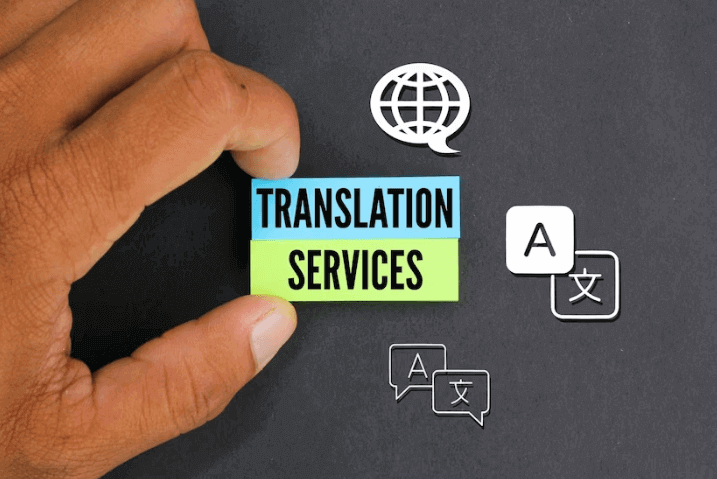Introduction:
A well-translated website plays a crucial role in reaching a global audience, expanding your business, and establishing credibility. This article discusses the importance of translating your website into multiple languages and provides valuable tips on utilizing professional translation services effectively.
Ensuring Accuracy and Quality
Professional translation services are the cornerstone of an accurately translated website. When choosing a translation service provider, consider the following aspects:
- Expertise and Specialization: Look for translation agencies or freelance translators who specialize in your industry or niche. They will have a better understanding of the specific terminology, jargon, and nuances relevant to your field, ensuring accurate translations that resonate with your target audience.
- Quality Control Measures: Reputable translation service providers have robust quality control processes in place. They employ experienced translators who undergo rigorous screening and testing to ensure their proficiency. Additionally, they may have proofreaders, editors, and project managers to review and refine the translated content before delivery.
- Confidentiality and Security: Choose a translation service provider that prioritizes data security and confidentiality. Ensure they have measures in place to protect your sensitive information and adhere to privacy regulations.
- Translation Technology: Professional translation services often leverage translation management systems and computer-assisted translation (CAT) tools. These technologies streamline the translation process, maintain consistency, and facilitate collaboration between translators and clients.
Key to Effective Localization
Localization goes beyond translation and involves adapting content to the cultural, linguistic, and regional preferences of the target audience. Professional translation services play a vital role in achieving effective localization:
- Cultural Adaptation: Professional translators possess the cultural knowledge necessary to adapt content appropriately. They consider cultural nuances, idioms, humor, and sensitivities to ensure that your website resonates with the target audience and avoids any cultural faux pas.
- User Experience Optimization: Localization involves more than just translating text. It extends to user interface elements, date formats, currency symbols, measurement units, and graphics. Professional translators with localization expertise can adapt these elements to create a seamless user experience for your international visitors.
- Legal and Regulatory Compliance: Depending on your industry and target market, there may be specific legal and regulatory requirements for your website’s content. Professional translation services ensure that your translated content adheres to these regulations, minimizing any legal risks or potential misunderstandings.
- Ongoing Support: Professional translation services often provide ongoing support to help you manage updates, additions, and changes to your website’s translated content. They can maintain translation memories and glossaries to ensure consistency across all translations and assist with future localization needs as your business grows.
By partnering with professional translation services, you can achieve accurate translations, effective localization, and ultimately provide a seamless user experience for your international audience, contributing to the success and growth of your website and business.
The Significance of Multilingual Websites:
In today’s interconnected world, catering to diverse linguistic preferences is key to business success. A multilingual website offers several advantages, including:
a. Global Reach: By translating your website, you can engage with a broader audience worldwide, increasing your potential customer base.
b. Improved User Experience: Visitors are more likely to stay on a website that speaks their language, resulting in better engagement, longer sessions, and increased conversions.
c. Competitive Edge: Offering content in multiple languages sets you apart from competitors and enhances your brand’s global image.
Selecting Languages to Translate:
Choosing the languages to translate your website into requires careful consideration. Factors to consider include:
a. Target Market Analysis: Identify countries or regions with significant market potential and determine the primary languages spoken in those areas.
b. Website Analytics: Analyze your website traffic to identify the geographic distribution of visitors. This data can guide your language selection process.
c. Customer Surveys and Feedback: Gather feedback from existing customers or conduct surveys to understand their language preferences.
Professional Translation Services:
While machine translation tools have improved, professional translation services are essential for ensuring accuracy and maintaining a professional image. Here’s why:
a. Quality Assurance: Professional translators possess the linguistic expertise, cultural knowledge, and attention to detail required for accurate translations.
b. Localization: Translating your website involves adapting content to the cultural nuances and preferences of the target audience, which professional translators excel at.
c. Consistency: Professional translation services can ensure consistent terminology and tone across your website, enhancing the overall user experience.
d. Time and Efficiency: Outsourcing translation to professionals saves you time, allowing you to focus on your core business activities while ensuring timely delivery of translations.
Tips for Translating Your Website:
When translating your website, keep the following tips in mind:
a. Cultural Sensitivity: Avoid direct translations that may not resonate with the target audience. Instead, adapt content to suit local customs, preferences, and cultural norms.
b. User-Centric Approach: Translate not only the main content but also user interface elements, menus, buttons, and forms to provide a seamless experience.
c. SEO Considerations: Optimize translated content for search engines by using appropriate keywords and metadata in the target language.
d. Localization Testing: Conduct thorough testing of your translated website to ensure all elements display correctly, links work, and content is error-free.
Conclusion:
Translating your website into multiple languages can significantly impact your business’s success in today’s global marketplace. By understanding the importance of professional translation services and implementing the provided tips, you can create a multilingual website that resonates with your target audience, enhances user experience, and drives growth.



